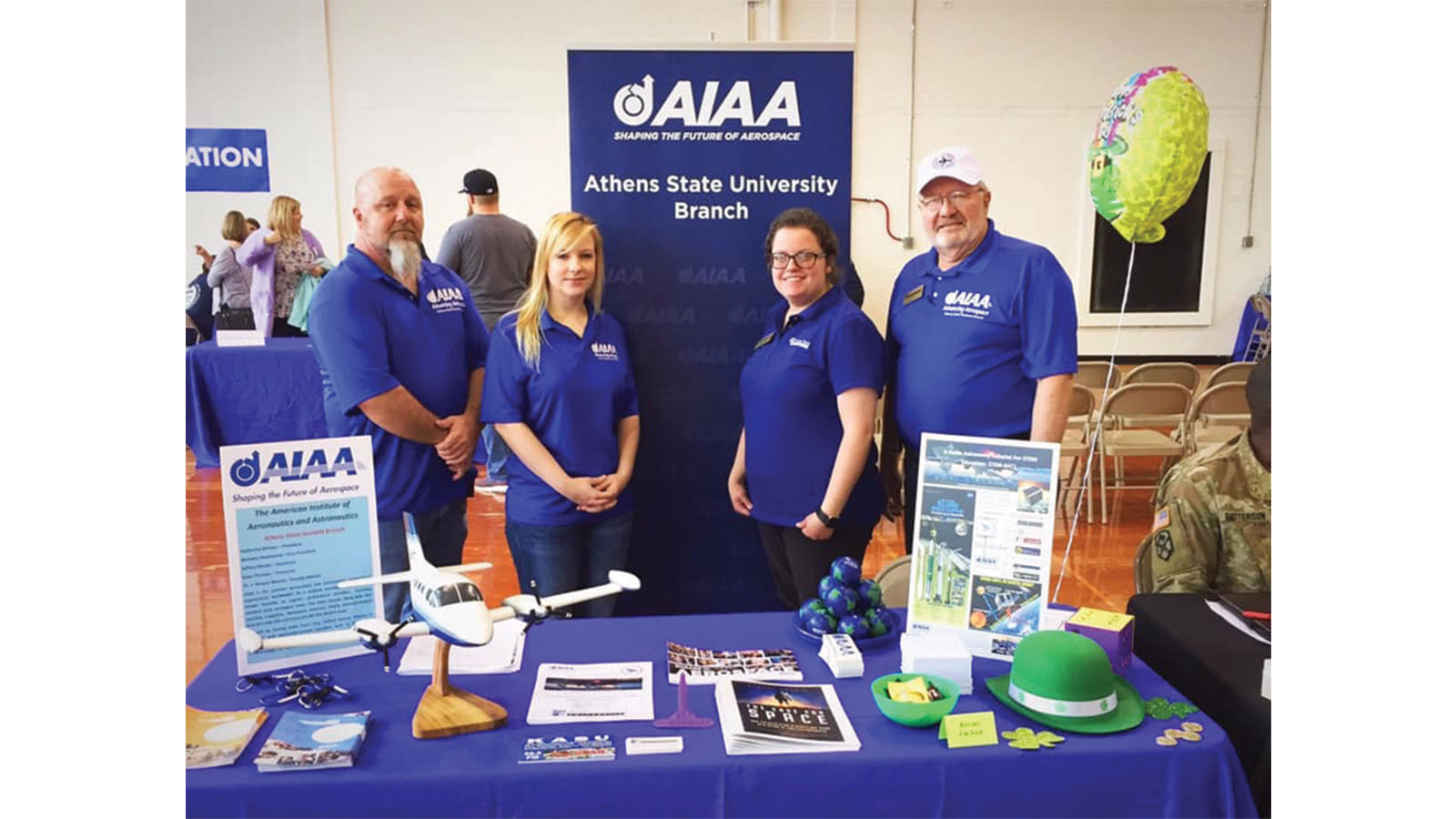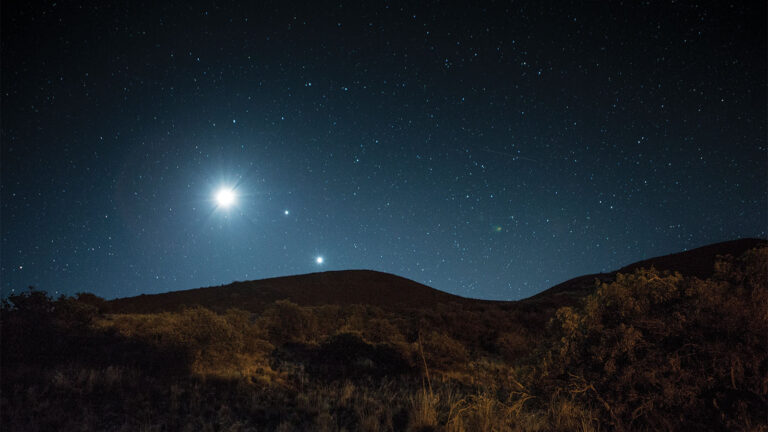Stay Up to Date
Submit your email address to receive the latest industry and Aerospace America news.

SAT IOC Chair visits the Von Karman Institute for Fluid Dynamics
By Dr. Amir S. Gohardani, SAT IOC Chair
The aviation sector faces many significant challenges ranging from improved transportation mobility and environmental protection. With notable objectives to reach specific air transportation goals in response to societal needs, the Advisory Council for Aeronautics Research in Europe (ACARE) recently unveiled Europe’s vision for aviation as ACARE 2050. Exploration of radically new ideas is indeed a common measure for identifying potential solutions for visions such as ACARE 2050. One of these ideas specifically refers to aircraft electric propulsion, the theme for a recent lecture series offered by the von Karman Institute for Fluid Dynamics (VKI) in Brussels, Belgium. As the opening session lecturer for this lecture series with prominent speakers from academia, government entities, and industry, it was rather interesting to observe that the technological aspects of electric propulsion were not the only drivers for electric aviation. VKI, a nonprofit international educational and scientific organization, hosting three departments in aeronautics and aerospace, environmental and applied fluid dynamics, and turbomachinery and propulsion recently opened a new window into the societal impacts of electric aviation, which highlighted a myriad of underlying factors including technology, business, and sustainability that guided the environmentally friendly and efficient mobility solutions. Through this visit, the intersection between aerospace technology and society, a core function of SAT IOC was evident. Currently, 15 NATO countries among 28 contribute to the financing of VKI, a world-class institution established in 1956. SAT IOC continuously aims to enable links between the general public and their understanding of aerospace technology and the committee constantly adapts its methods to reach a larger portion of society. Visiting the VKI indeed casted additional light on the impact of experimental, computational, and theoretical research on society.
Nominations for AIAA Directors Being Accepted Through 12 July
The AIAA Council of Directors Nominating Committee (CNC) will compile a list of potential nominees for the open Director positions on the AIAA Council of Directors. This list will include nominees who will be selected to go to the next step of competency review and interview held by the CNC. The CNC will select specific candidates for the open Director positions who will be voted on by the AIAA membership. The final slate of candidates will be publicized by December 2019 for the election that will be held January/February 2020.
Nominations are being accepted for Regional, Integration and Outreach, and Technical Group Directors for the term beginning May 2020–2023. AIAA members may nominate members qualified for the open position by submitting a nomination no later than 1800 hrs EDT, 12 July 2019.
Regions coordinate the activities of geographically related sections to facilitate cooperative efforts between the various geographical areas. A Regional Director shall lead each region. The voting members who belong to that region shall elect the Regional Director for that region. The Regional Director for each group shall be a member of the Regional Engagement Activities Division (READ) as well as a delegate to the Council of Directors. The term for Regional Directors shall be three years and there shall be a limit of the Regional Director serving two consecutive terms. Nominations are being accepted for:
Region I – North East, Director
Region II – South East, Director
Region VII – International, Director
Integration and Outreach Groups coordinate the activities of related Integration and Outreach Committees to facilitate cooperative efforts between the various professional areas. An Integration and Outreach Group Director shall lead each Integration and Outreach Group. All voting members shall elect the Integration and Outreach Directors. The Integration and Outreach Director for each group shall be a member of the Integration and Outreach Activities Division (IOD) as well as a delegate to the Council of Directors. The term for Integration and Outreach Group Directors shall be three years and there shall be a limit of the Integration and Outreach Group Director serving two consecutive terms. Nominations are being accepted for:
Business and Management Group, Director
Young Professionals Group, Director-Elect
Technical Groups coordinate the activities of related technical committees to facilitate cooperative efforts between the various technical disciplines. A Technical Director shall lead each Technical Group. The voting members who belong to that group shall elect the Technical Director for that group. The Technical Director for each group shall be a member of the Technical Activities Division (TAD) as well as a delegate to the Council of Directors. The term for Technical Directors shall be three years and there shall be a limit of the Technical Director serving two consecutive terms. Nominations are being accepted for:
Aviation Technology, Integration and Operations Group, Director
Space and Missiles Group, Director
To nominate an AIAA member in good standing for the open positions on the AIAA Council of Directors, please submit the nominee’s bio and/or CV, history of AIAA activities and/or engagement with other professional societies, and a statement from the nominee of willingness and ability to serve if elected.
Please submit nominations directly to Christopher Horton, AIAA Governance Secretary, [email protected], no later than 1800 hrs EDT, 12 July 2019.
Making an Impact: AIAA Educator Achievement Awards
Students in today’s classrooms could be the next inventors, entrepreneurs and leaders who help us travel faster, father and safer both on Earth and through space. But first, they need a good teacher.
That’s why AIAA created the Educator Achievement Awards in 1997. This year’s honorees each received $5,000 for themselves as well as a matching $5,000 for their respective schools, a first for the Foundation, said Jim Maser, AIAA Foundation chair.
“These (teachers) are at the tip of the spear,” Maser said while introducing the winners at the AIAA Aerospace Spotlight Awards Gala in May.
The winners are:
• Charlotte Cook, Young Astronaut Specialist at Carver Magnet School in Little Rock, Arkansas, for “bringing STEM practices to our school, district, and community by utilizing AIAA and other resources that open students’ eyes to endless possibilities.”
• Patricia Palazzolo , Gifted Education Coordinator at Upper St. Clair High School in Upper St. Clair, Pennsylvania, for “encouraging students to pursue space- and STEM-related careers through hands-on projects and mentorship.”
• Megan L. Tucker, STEAM Specialist at Hillsboro Charter Academy in Hillsboro, Virginia, for “inspiring a love of STEAM nationally for scholars and colleagues alike using aerospace education, Megan has a passionate mission for creating an ‘Aviation Fascination’!”
These premier educators talked about their students, mentors and inspiration at the awards ceremony.
“Just like Haley’s comet I strive to leave behind a beautiful legacy,” Cook said. “The AIAA Foundation has given me the resources to open students’ minds to endless possibilities. Therefore, helping me leave a little bit of myself behind to make a difference in students’ lives.”
Palazzolo drew upon Shakespeare to thank the audience “for being the stuff dreams are made of, all of you, with all you do—astronautics and aeronautics—have given this teacher a supply of stuff that I’ve been able to use to encourage my students to pursue their dreams.”
For Palazzolo, who has been teaching for 44 years, some of her students have become rocket scientists. She is now “seeing the dreams of yesterday… become the reality of today.”
And it all begins in an elementary school classroom, Tucker said.
“They’re going to dream of things we can’t even imagine and design things we can’t even dream. But it needs to start being encouraged today. I truly believe that if the student is motivated, he or she can achieve anything, and aerospace is the perfect motivation. Your attitude truly does determine your altitude.”
Tucker added, “teaching is ultimately about lighting the fire of lifelong learning and aerospace education is the spark.”
For more information about AIAA’s educational activities or to make a donation, please contact Foundation Director Merrie Scott, [email protected] or visit aiaa.org/foundation.
AIAA “Look Up!” Award
The AIAA “Look Up!” Award, presented at the 2019 Intel International Science and Engineering Fair (Intel ISEF), held 12–17 May, celebrates exceptional high school-level research to courage further study in aerospace. Winners of the AIAA “Look Up!” Award receive a cash award and one year of AIAA student membership with access to all student programs. We congratulate the 2019 winners and encourage students to Look Up! and see their future in aerospace.
First-Place Award ($2000 award)
Using a Computer Program Applied to an Electromagnetic Walking Apparatus to Simulate Earth’s Gravity in Space, MaryAlice Young, Bishop Kenny High School, Jacksonville, FL
Second-Place Award ($1500)
Implications for Biogas Energy Use via Methanogenesis in Mars Conditions, Alexandria Montgomery, West Salem High School, Salem, OR
Third-Place Award ($1000)
Development of Predictive Software for the Engineering & Optimization of Reliable Rocket Components, Chad Brown and Ryan Pearson, Woods Cross High School, Bountiful, UT
Fourth-Place Award ($500)
Design and Numerical Analysis of a Novel Co-Flow Jet System to Improve the Lift, Range, and Fuel Efficiency of a Commercial Airline Wing, Hans Ehrnrooth, Pine Crest School, Ocean Ridge, FL

2019 Team America Rocketry Challenge
AIAA is proud to be an education partner of the Team America Rocketry Challenge (TARC), which had its National Finals Fly Off on 18 May. The winners were the team from Madison West High School of Madison, WI, and took home the top prize at the nation’s largest student rocketry competition. The students from Madison West will represent the United States at the International Rocketry Challenge at the Paris International Air Show in June, facing off against teams from France, the UK, and Japan. Competitions such at TARC are a great opportunity to expose students to the challenges, fun, and comradery that underpins aerospace.

AIAA Western Michigan University Student Branch
In April, Distinguished Lecturer Charlie Vono visited the Western Michigan University Student Branch. The students enjoyed hearing Mr. Vono’s stories and were appreciative of his knowledge of the history of the SR-71 and the KC-135Q. “…I thought it was great how Mr. Vono was able to answer most questions with a detailed story. His knowledge … ranged from general engineering principles to simple life experience. … I sincerely hope that I remember some of what he said years from now because I really thought he gave us some great advice for life and education.”—Aidan Wales, Western Michigan University class of 2021.

AIAA Athens State University Student Branch
The AIAA Athens State University Student Branch hosted a table at the university’s Spring Term Transfer Day. Student members Danny Porter, Kathy Williams, Bethany Hammond, and Faculty Advisor Dr. Wayne McCain spoke to other students about upcoming summer classes, Dr. Robert Zubrin’s new book The Case For Space, and the Management of Technology curriculum.
Stay Up to Date
Submit your email address to receive the latest industry and Aerospace America news.




